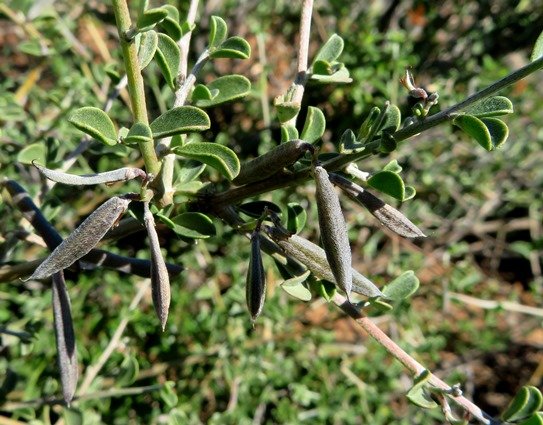Indigofera

Author: Ivan Lätti
Photographer: Thabo Maphisa
Indigofera is a genus of annual and perennial herbs, shrubs and undershrubs in the Fabaceae or pea family. The indigo plants are mostly covered in forked hairs on stems and leaves.
The leaves are simple, scale-like or pinnate, comprising three to nine leaflets. The leaflets are more often opposite than alternate, their margins entire. The stipules are hair-like to leaf-like, while stipels, secondary stipules, are often present at leaflet bases.
The inflorescence is a leaf axil or stem-tip spike or raceme, sometimes on long peduncles with bracts that sometimes persist. The calyx usually has a bell-shaped tube, its lobes about equal. The flowers have the characteristic peaflower shape, mostly in shades of pink.
The banner petals are usually sessile with hairs on the outside. The pairs of lateral wings may be clawed, eared or hunched. The keels have short, broad claws, sometimes dilated into sacs or spurs, prominently hair-fringed along the upper margins.
The stamens are joined in a tube with the one nearest the banner separate. The anthers are pointed. The ovaries are mostly sessile, each comprising one to many ovules. The styles are usually bent at a right angle, the stigmas capitate.
The fruits are variable, wide or narrow pods, globose or linear, coiled or straight and sometimes hairy. The seeds are separated inside the pods by dividing walls or septa. The seeds are globose to cylindrical, sometimes compressed or ellipsoid.
There are about 730 Indigofera species widespread in tropical and subtropical areas, 210 of which occur in southern Africa.
Plant parts of several species, including the roots, have featured in traditional medicine or still do. The leaves of some species yield indigo, used as a dye.
The plant in picture is Indigofera obcordata (Leistner, (Ed.), 2000; Vlok and Schutte-Vlok, 2015; Manning, 2007; Van Wyk and Gericke, 2000).

